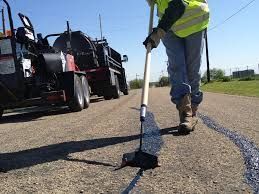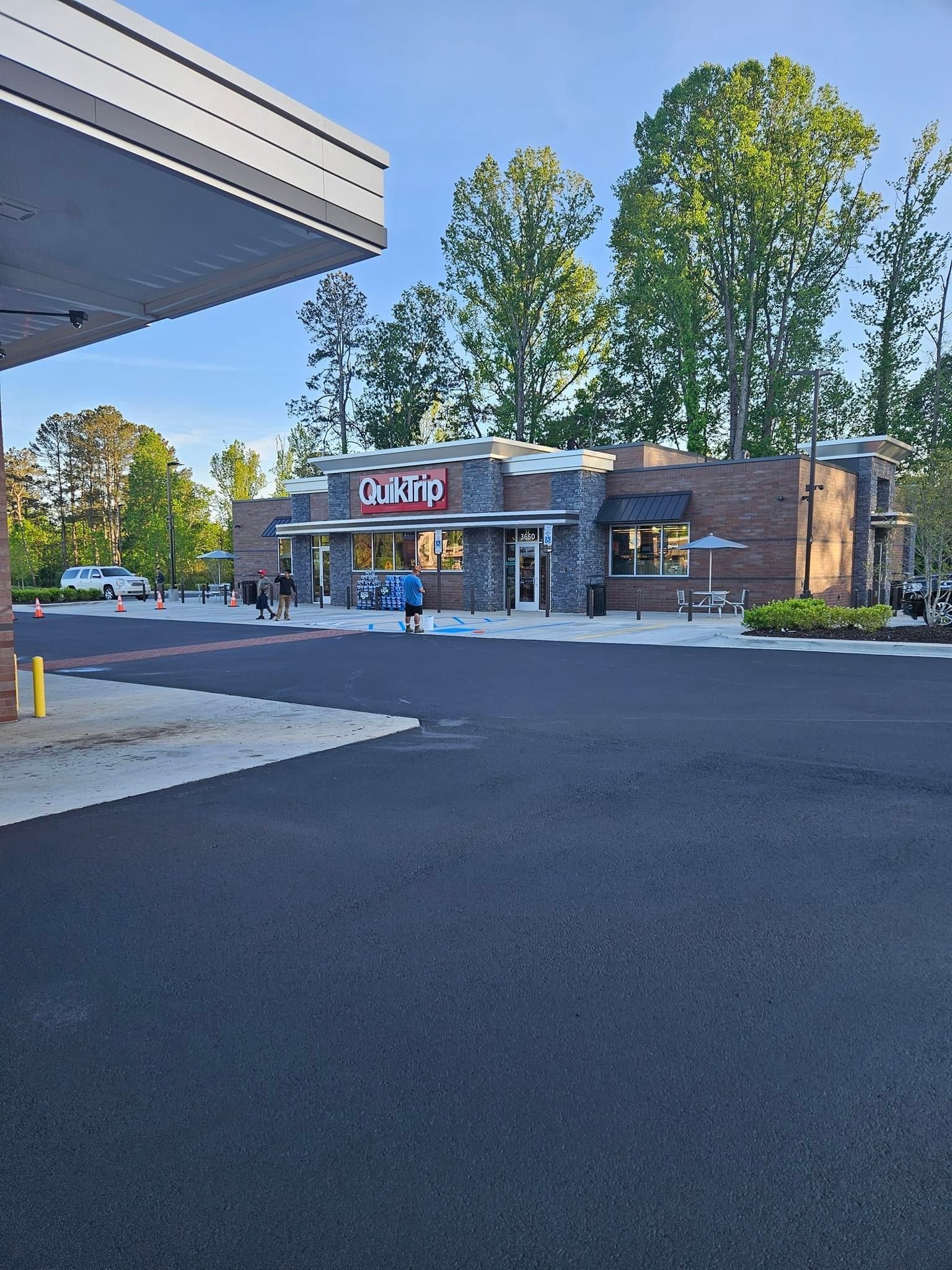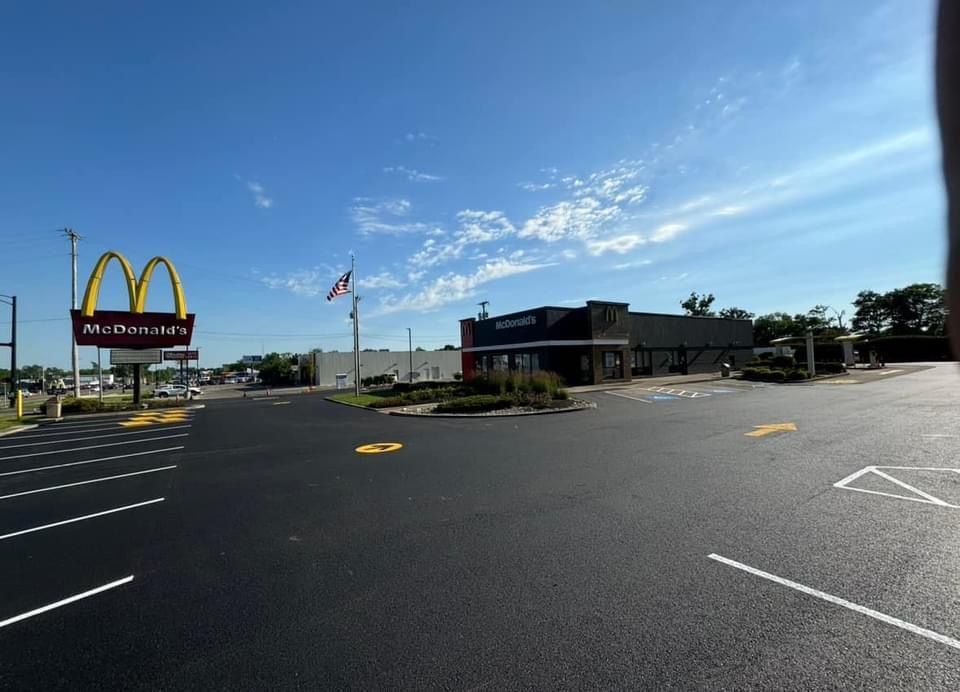Encore seealcoating
About
We're the best in our field, and it's all thanks to the incredible relationships we've formed with our clients. Unlike our competitors, we're invested in developing a personal connection with each and every one of our customers, by providing quality service and being available to you 24/7. Get in touch with us when you're ready to learn more; we can't wait to meet you!
Our services
Asphalt line striping
Asphalt line striping, also known as pavement marking, is the process of applying paint or other materials to asphalt surfaces to create visible markings, lines, symbols, and signs for traffic control, parking lot organization, and safety purposes. Here are some key points about asphalt line striping:
1. **Traffic Control:** Line striping is essential for guiding and controlling traffic flow on roads, parking lots, and other paved areas. Clear and well-defined lines help to indicate lanes, pedestrian crossings, stop bars, and other traffic regulations.
2. **Safety:** Properly marked lines and symbols improve safety by providing clear indications of where vehicles and pedestrians should travel, stop, yield, and park. This helps to reduce the risk of accidents and promote orderly movement of traffic.
3. **ADA Compliance:** Line striping must adhere to regulations set forth by the Americans with Disabilities Act (ADA) to ensure accessibility for individuals with disabilities. This includes marking accessible parking spaces, crosswalks, and other designated areas.
4. **Parking Lot Organization:** Line striping is crucial for organizing parking spaces in parking lots, including marking individual spaces, aisles, fire lanes, loading zones, and other designated areas. Well-marked parking lots help to maximize space utilization and improve traffic flow.
5. **
7. **Maintenance:** Over time, line striping may fade or wear due to traffic and weather conditions. Regular maintenance, such as repainting faded lines or restriping worn markings, is important to ensure continued effectiveness and safety.
In summary, asphalt line striping plays a critical role in traffic control, safety, and organization of paved areas. Well-maintained and clearly marked lines help to improve traffic flow, enhance safety, and provide a better overall experience for drivers and pedestrians.
Contact us today
1. **Traffic Control:** Line striping is essential for guiding and controlling traffic flow on roads, parking lots, and other paved areas. Clear and well-defined lines help to indicate lanes, pedestrian crossings, stop bars, and other traffic regulations.
2. **Safety:** Properly marked lines and symbols improve safety by providing clear indications of where vehicles and pedestrians should travel, stop, yield, and park. This helps to reduce the risk of accidents and promote orderly movement of traffic.
3. **ADA Compliance:** Line striping must adhere to regulations set forth by the Americans with Disabilities Act (ADA) to ensure accessibility for individuals with disabilities. This includes marking accessible parking spaces, crosswalks, and other designated areas.
4. **Parking Lot Organization:** Line striping is crucial for organizing parking spaces in parking lots, including marking individual spaces, aisles, fire lanes, loading zones, and other designated areas. Well-marked parking lots help to maximize space utilization and improve traffic flow.
5. **
7. **Maintenance:** Over time, line striping may fade or wear due to traffic and weather conditions. Regular maintenance, such as repainting faded lines or restriping worn markings, is important to ensure continued effectiveness and safety.
In summary, asphalt line striping plays a critical role in traffic control, safety, and organization of paved areas. Well-maintained and clearly marked lines help to improve traffic flow, enhance safety, and provide a better overall experience for drivers and pedestrians.
Asphalt sealcoating
Asphalt sealcoating is a process in which a protective coating is applied to asphalt-based pavements to protect them from damage caused by sunlight, water, chemicals, and general wear and tear. Sealcoating helps to extend the lifespan of asphalt surfaces and enhances their appearance.
Here are some key points about asphalt sealcoating:
1. **Protection:** Sealcoating acts as a barrier that helps to prevent water penetration, oxidation, and damage from oil and other chemicals. This protection extends the life of the asphalt surface.
2. **Prevention:** Sealcoating helps to prevent cracks and potholes from forming by sealing the surface and preventing water from seeping into the underlying layers.
3. **Appearance:** Sealcoating gives asphalt a fresh, black finish that enhances the overall appearance of the pavement.
4. **Maintenance:** Regular sealcoating is part of a good pavement maintenance program and can help reduce the need for costly repairs or replacements.
5. **Timing:** It is recommended to apply sealcoating every 2-3 years, or as needed depending on the condition of the pavement and the amount of traffic it receives.
6. **Professional Application:** It is important to have sealcoating applied by professionals who have the equipment and expertise to ensure proper coverage and adhesion.
7. **Preparation:** Before sealcoating, the pavement should be cleaned thoroughly, any cracks should be filled, and repairs should be made as necessary.
Overall, asphalt sealcoating is an important part of maintaining asphalt pavements and can help prolong their lifespan while keeping them looking their best.
Contact us today
Here are some key points about asphalt sealcoating:
1. **Protection:** Sealcoating acts as a barrier that helps to prevent water penetration, oxidation, and damage from oil and other chemicals. This protection extends the life of the asphalt surface.
2. **Prevention:** Sealcoating helps to prevent cracks and potholes from forming by sealing the surface and preventing water from seeping into the underlying layers.
3. **Appearance:** Sealcoating gives asphalt a fresh, black finish that enhances the overall appearance of the pavement.
4. **Maintenance:** Regular sealcoating is part of a good pavement maintenance program and can help reduce the need for costly repairs or replacements.
5. **Timing:** It is recommended to apply sealcoating every 2-3 years, or as needed depending on the condition of the pavement and the amount of traffic it receives.
6. **Professional Application:** It is important to have sealcoating applied by professionals who have the equipment and expertise to ensure proper coverage and adhesion.
7. **Preparation:** Before sealcoating, the pavement should be cleaned thoroughly, any cracks should be filled, and repairs should be made as necessary.
Overall, asphalt sealcoating is an important part of maintaining asphalt pavements and can help prolong their lifespan while keeping them looking their best.
Asphalt crackfill
Asphalt crack filling is a common maintenance technique used to repair cracks in asphalt pavements before they develop into larger problems like potholes. Here are some key points about asphalt crack filling:
1. **Purpose:** The primary purpose of crack filling is to prevent water from seeping into the base layers of the pavement and causing further damage. Water intrusion can lead to erosion of the base materials, freeze-thaw cycles that expand cracks, and overall deterioration of the pavement.
2. **Materials:** Crack filling materials are typically rubberized asphalt emulsions or hot-applied rubberized sealants. These materials are flexible and adhere well to the sides of the crack, providing a waterproof seal.
3. **Process:** The crack filling process involves cleaning out the crack to remove debris and vegetation, applying the crack filler material, and then smoothing or leveling it off to ensure a flush finish with the surrounding pavement.
4. **Timing:** It is important to address cracks in asphalt pavements as soon as they are noticed to prevent them from expanding and causing more significant damage. Regular inspections and proactive crack filling can help extend the life of the pavement.
5. **Preparation:** Proper preparation of the crack is essential for a successful repair. This may involve cleaning the crack with compressed air or a wire brush, and ensuring the crack filler adheres well to the sides of the crack.
Overall, asphalt crack filling is an important maintenance practice that helps to preserve the integrity of asphalt pavements and prevent costly repairs in the future. Regular crack filling, along with other maintenance activities like sealcoating, can help extend the lifespan of asphalt surfaces.
Contact us today
1. **Purpose:** The primary purpose of crack filling is to prevent water from seeping into the base layers of the pavement and causing further damage. Water intrusion can lead to erosion of the base materials, freeze-thaw cycles that expand cracks, and overall deterioration of the pavement.
2. **Materials:** Crack filling materials are typically rubberized asphalt emulsions or hot-applied rubberized sealants. These materials are flexible and adhere well to the sides of the crack, providing a waterproof seal.
3. **Process:** The crack filling process involves cleaning out the crack to remove debris and vegetation, applying the crack filler material, and then smoothing or leveling it off to ensure a flush finish with the surrounding pavement.
4. **Timing:** It is important to address cracks in asphalt pavements as soon as they are noticed to prevent them from expanding and causing more significant damage. Regular inspections and proactive crack filling can help extend the life of the pavement.
5. **Preparation:** Proper preparation of the crack is essential for a successful repair. This may involve cleaning the crack with compressed air or a wire brush, and ensuring the crack filler adheres well to the sides of the crack.
Overall, asphalt crack filling is an important maintenance practice that helps to preserve the integrity of asphalt pavements and prevent costly repairs in the future. Regular crack filling, along with other maintenance activities like sealcoating, can help extend the lifespan of asphalt surfaces.
Customer reviews
Follow
Contact us
We're here to help! Send any questions you have over to us. We look forward to hearing from you.













